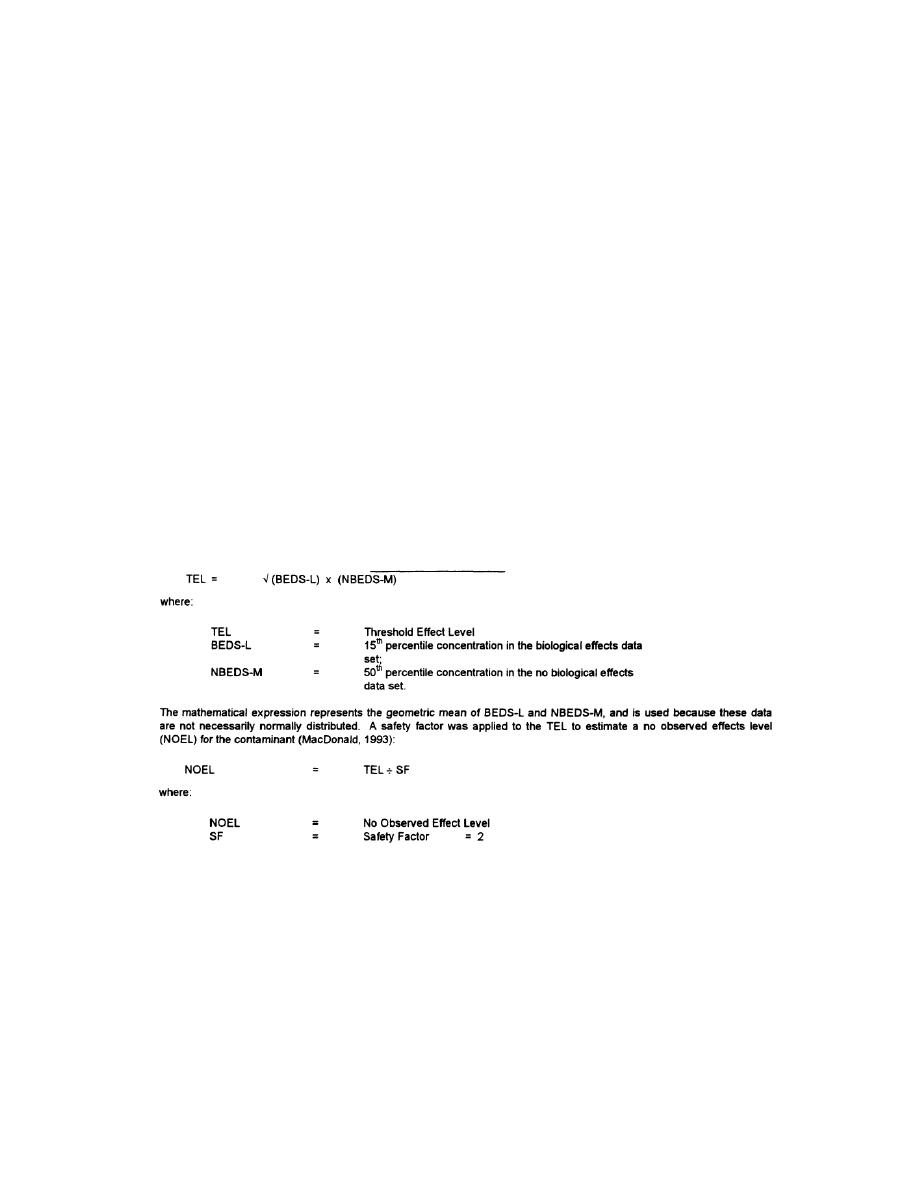
Encl. (1) TO COMDTINST 16478.12
the biological significance of sediment-associated contaminants. This was done by incorporating
data from Florida and other southeastern areas and recent data from elsewhere in North America,
to increase the level of internal consistency in the database. The procedure developed by the
Florida DER will subsequently be referred to as the Weight of Evidence Approach, or WEA.
One of the principal limitations of the original NSTP database on the biological effects of
sediment-associated contaminants is its bias toward data derived from studies in northeastern and
western coastal areas of the country. To address this, a major initiative was undertaken to
expand the original NSTP database. Investigators in the field of sediment quality assessment
located in the Gulf coast and southern Atlantic coast states were contacted and asked to identify
studies they had conducted that contained matching sediment chemistry and biological effects
data. Over the course of the study, more than 300 publications were retrieved and evaluated to
determine their suitability for use in the derivation of the SQAGs. Acceptable data sets were
integrated into the databases.
Derivation of Numerical Sediment Quality Assessment Guidelines
Each entry in the database was assigned an "effects/no effects" descriptor, based on the degree
of concordance between the sediment concentration of the contaminant and the endpoint measured in
the investigation. Those labeled "effects" comprised a database called BEDS (Biological Effects
Data Set) in which specific adverse biological effects (as indicated from the results of sediment
toxicity bioassays or benthic invertebrate community assessments) were observed at some of the
sites samples. A separate data set was also established called NBEDS (No Biological Effects Data
Set). These entries consisted of data from bioassays in which exposure of aquatic organisms to
test sediments did not result in significant biological effects (MacDonald, 1993).
NOEL - No Observed Effects Level
Concentrations of sediment-associated contaminants below the No Observed Effects Level (NOEL) are
not considered to represent significant hazards to aquatic organisms. The level was defined by
using a two-step process. First, a Threshold Effects Level (TEL) was calculated, and is
considered to represent the upper limit of the range on sediment contaminant concentrations that
is dominated by no effects data entries. The TEL was calculated as follows (MacDonald, 1993):
Application of this safety factor was considered to provide a pragmatic means of compensating for
the limitations on the database with respect to the lack of chronic toxicity data, and a
resulting bias toward acute toxicity data. The NOEL is considered to represent the upper limit
of the no effects range of contaminant concentrations. The resulting NOEL levels for mercury and
lead are 0.1 ppm and 21 ppm, respectively.
PEL - Probable Effects Level
The probable effects level (PEL) is defined as the lower limit of the range of contaminant
concentrations that are usually or always associated with adverse biological effects. The
procedure utilized to calculate the PEL is designed to define a range of concentrations that is
dominated by entries from the BEDS. Within the probable effects range, concentrations are
considered to represent significant and immediate hazards to aquatic organisms. The PEL was
calculated as follows (MacDonald, 1993):
10




 Previous Page
Previous Page
